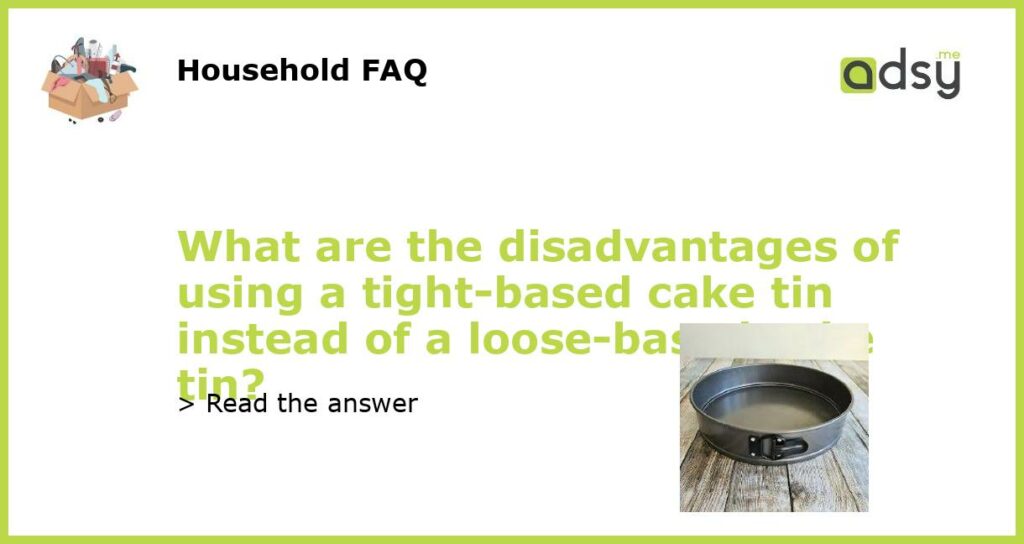Why a tight-based cake tin may not be the best choice for baking
If you’re a keen baker, you’ll know that the right cake tin can make all the difference when it comes to creating a perfect bake. But with so many options available, it can be hard to know which one to choose. One common choice is a tight-based cake tin, which as the name suggests, has a bottom that is firmly attached to the sides. While this type of tin may seem like a good idea at first, there are some disadvantages you should be aware of.
The cake can be difficult to remove
One of the main disadvantages of a tight-based cake tin is that it can be difficult to remove your cake once it’s finished baking. With a loose-based tin, you can simply push the base up and the sides will release, making it easy to remove the cake without damaging it. With a tight-based tin, however, you need to turn the tin upside down and hope the cake will slide out. This can be particularly challenging if the cake is very delicate or sticky, as it’s much easier for it to fall apart or stick to the sides of the tin.
It can be hard to clean
Another issue with tight-based cake tins is that they can be harder to clean than loose-based ones. When you’re washing up a tight-based tin, you need to be careful not to get water in the bottom of the tin, as this can cause the cake to get wet or even steam. This can make it trickier to get the tin properly clean, especially if you’re trying to remove stubborn grease or crumbs.
The cake can be unevenly cooked
A common problem when using a tight-based cake tin is that the cake can end up being unevenly cooked. This is because the top of the cake is often closer to the heat source than the bottom, meaning it can cook faster and harder. This can result in a cake that is burnt on top but undercooked in the middle, or one that is dry and tough at the edges but soft and gooey in the centre.
It can affect the texture of the cake
Finally, using a tight-based cake tin can also affect the texture of your cake. Because the tin is so tightly sealed, it can prevent steam from escaping, which can cause the cake to become dense and heavy. This can be particularly problematic if you’re making a sponge or light, airy cake that requires a lot of rise and fluffiness. With a tight-based tin, your cake is much more likely to be heavy and stodgy, which may not be the texture you’re looking for.






